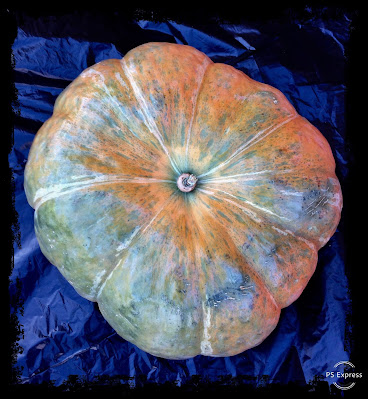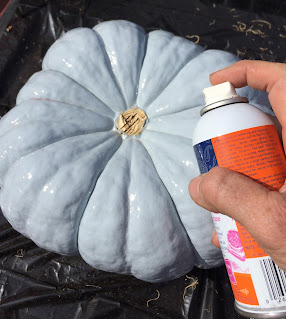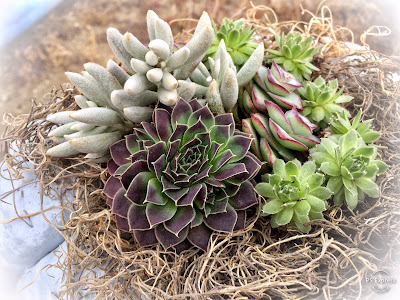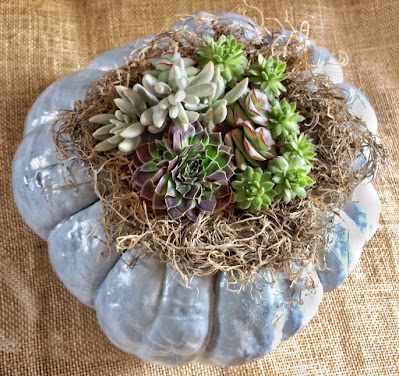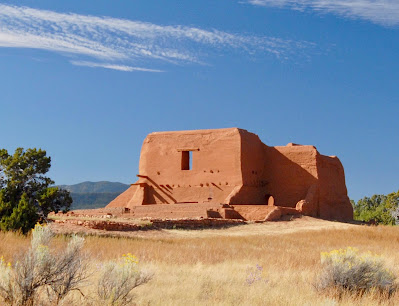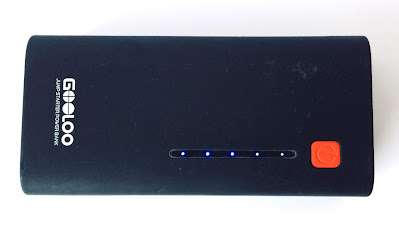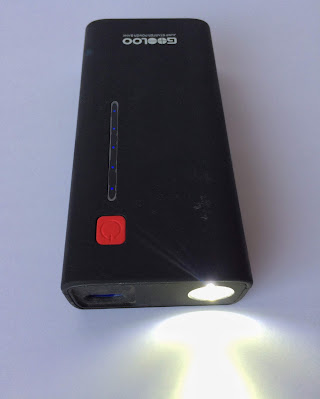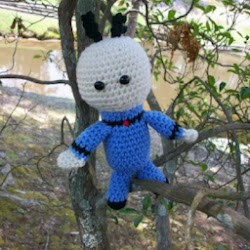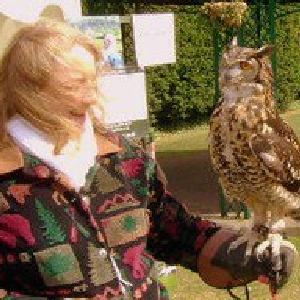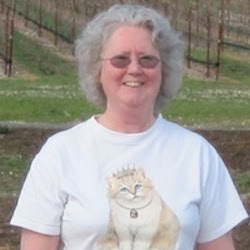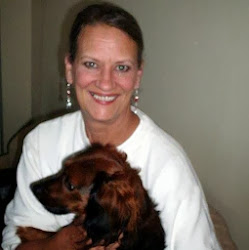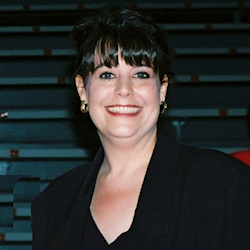 |
| Wetlands at Alamosa National Wildlife Refuge |
Just recently, I have come to experience the Alamosa National Wildlife Refuge in an entirely new way. Instead of sampling the sanctuary like a temporary visitor, I have found my own rhythm of belonging. In becoming a part of this vital place, I have been able to take in a much deeper level of sustenance. Perhaps this is the real beauty of refuges. More than just protecting and conserving natural resources for the benefit of wildlife, they can greatly nourish anyone who truly enters into them. This is not so much a review of a tourist attraction, or place, as it is a review of learning how to let a place enter into you in a way that feeds your spirit.
As I turn off of busy Highway 160 in South Central Colorado this morning, I slow my vehicle's speed way down. The two-mile approach to Alamosa NWR's Visitor Center is where I begin to align my pace with that of the natural world. Opening all of my windows, I breathe deeply and feel the gentle breeze and soft rays of the early morning sunlight on my face. Reaching into my camera backpack, a palpable sense of anticipation rises up to meet me.
I start counting telephone poles. There he is, as always, on pole number seven. My greeter. Here's where I admit that I don't know what kind of hawk he is. At some point, I will pull out a book and ID him, but I'm not obsessed with that right now—which is unusual for me. In the past, I would have immediately wanted to know his name. The new me has a different agenda for coming to know him.
 |
| Sign Marking Entrance to the Alamosa National Wildlife Refuge |
Off to my left, I pass ANWR's entrance sign. My morning's soundtrack changes dramatically. Gravel pops and pings as it ricochets off the bottom of my red Sport Trac. In my left ear, a meadowlark's lilting aria floats in thin air. Simultaneously, my right ear picks up the raucous rap of a Marsh wren. Ahh... the concert has begun, and like a children's preschool program, the singers won't necessarily be bringing their voices in on time or in perfect harmony. These voices, like their creatures, will do their own thing, and it will be chaotic at times, but gloriously so.
 |
| Star Actress in Today's Theater Production of "Fake Broken Wing" - Mama Killdear |
Slowly, slowly I creep along the entrance road hoping for an iconic doing-the-splits photo of one of those boisterous wrens. Suddenly, without warning, a theater production of
Fake Broken Wing opens up in front of my vehicle. The chorus erupts into: kill dear, kill dear, kill dear. Whoa!
Good thing I am driving about half a mile an hour (my typical wildlife-photographer-on-the-hunt speed). A pair of killdear parents have young chicks attempting to cross the road without first looking both ways. I've never seen baby killdears until this very moment and they are perfect in every way. Oh, the wonder!
 |
| Baby Killdear - Cuteness Overload |
The teacher in me wants to play crossing guard and get those precious babies across the road. Children... it's not safe. Hurry! My heart pounds when I think of how easily these young ones could be run over by a car. Relief floods me when I silently count the chicks now on the opposite shoulder of the road. Five. Phew! They all made it.
Now, as I'm attempting to photograph the family from my vehicle, they launch themselves, in true killdear form, into what the former athlete in me recognizes as Fartlek (I do not make this stuff up) training. Imagine seven photographic subjects, all going in different directions, speed walking for several steps, and then briefly pausing before sprinting away in the opposite direction. I try to anticipate when and where those slower intervals will take place and press the shutter button in an act of faith. This is living in the moment. Talk about exhilaration!
It's time to roll on down the road. I never want to stress the wildlife by overstaying my welcome. You learn to take the gift they give you, and with good grace, give them the breathing room they need. If I drove out of the refuge right now, my day would be complete.
 |
| Young Mule Deer Buck With Antlers in the Velvet |
What I am learning about this refuge is that there are layers you must peel back to get at the true essence. You can't be in a hurry, and to get the most out of a sanctuary experience, you want to use all of your senses. Long before you see something spectacular, you are most likely going to hear it, or feel its presence—that is, if you nurture your inherent sense of awe and wonder. Anticipation and stillness. That is the intersection where the marvelous can, and will, happen in this place.
The other thing is this: Don't just look for the big magnificence. Often, the most delightful splendor comes in the tiniest of packages. While there will be crowds at area refuges during the seasonal Sandhill crane migrations, or when elk herds are moving through, it is in the smaller, and yet equally mesmerizing annual voyages of say, butterflies, that one may become immersed in transcendent moments.
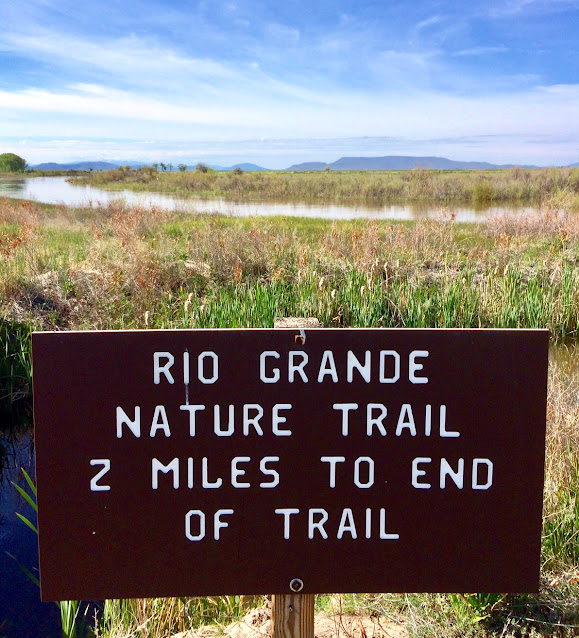 |
| Walking is the More Intimate Way to Experience the Refuge |
Right now, with the wildflowers in full bloom, so much teeming life is taking place in the ditches and meadows of the sanctuary. This is the time to walk the two-mile nature trail (although I found it temporarily closed today due to the Rio Grande's flooding and the presence of the endangered Willow flycatcher). There is so much beauty right underfoot.
 |
| Yellow-Headed Blackbird |
Any time I enter the Alamosa National Wildlife Refuge, I know that an initial assessment of what's going on will vastly underestimate the real activity that is taking place. I watch first-time visitors quickly drive the three-mile auto tour loop and leave. I imagine them saying, "Nothing but blackbirds." Sadly, they have missed out on everything. I was once that visitor.
In my ongoing evolution from refuge visitor to a sort of artist-in-residence, I can easily spend all day immersed in nature's artistry. There is an art to being both a witness to, and a player among, the many moving parts of a wildlife refuge. I believe the natural world reveals most of its brilliance to those who honor the gift-giver. And I think the honor is in how we pause and pay deep attention, with reverent awe, and a true sense of gratitude. There is honor in not taking for granted any creature, no matter if there are thousands of them, and no matter if they are present year-round.
 |
| A Glow-in-the-Dark Male Yellow Warbler With a Mouth Full of Insects |
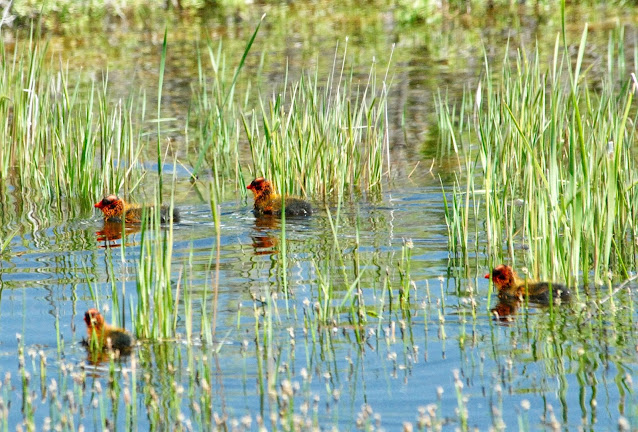 |
| Dr. Seuss Chicks - American Coot Babies - Wow, Just Wow! |
Today, some of the generous gift-givers have been, in addition to the wondrous greeters I have already mentioned, the lovely Yellow-headed blackbird, the brightest colored warbler I have ever seen, three curious Mule deer, various larks, an amazing porcupine, the Dr. Seuss chicks of an American Coot, a sweet-voiced flycatcher, two American bitterns (listed as uncommon for the refuge), a garter snake (true confession: earlier in my life I would not have put snakes on the gift list), teal ducks, Mallard ducks, a Pied-billed grebe, numerous swallows, and way too many others to note in this limited space. They know who they are and they know that I revel in their presence.
To miss a day at the refuge, is to miss out on the unfolding of thousands of tiny miracles. I've found there is no slow season when it comes to the miracle of life. Any time I find myself drinking in sustenance at the oasis we call the
Alamosa National Wildlife Refuge, is the time of my life.
 |
| Water is the Lifeblood of the San Luis Valley's National Wildlife Refuges |
I encourage you to find your own little oasis where you can soak up the refreshment to be found in spaces that rehydrate the spirit and soul. Where we find our sustenance, we find everything we need to thrive and grow into the fullness of our own being. When that happens, we become the refuge that attracts others into our nourishing space. Being the place, or space, others want to inhabit—isn't that the high calling?
Note: The author may receive a commission from purchases made using links found in this article. “As an Amazon Associate, Ebay (EPN) and/or Esty (Awin) Affiliate, I (we) earn from qualifying purchases.”





